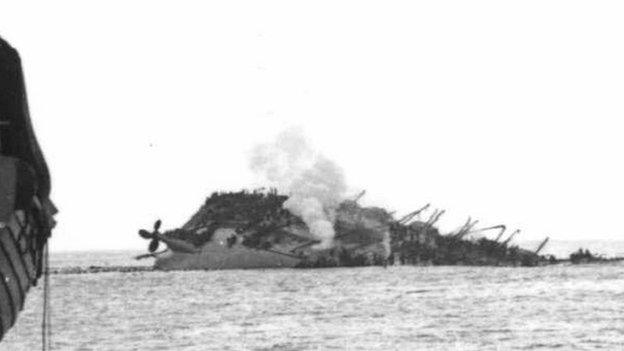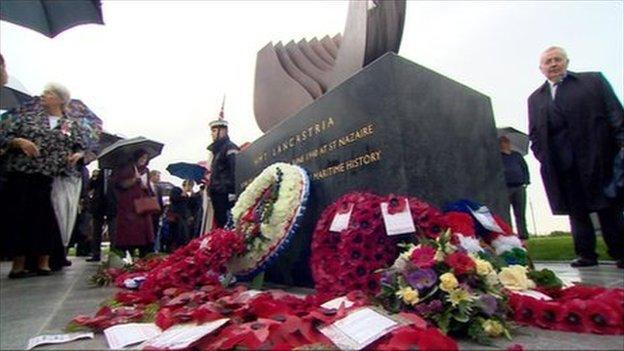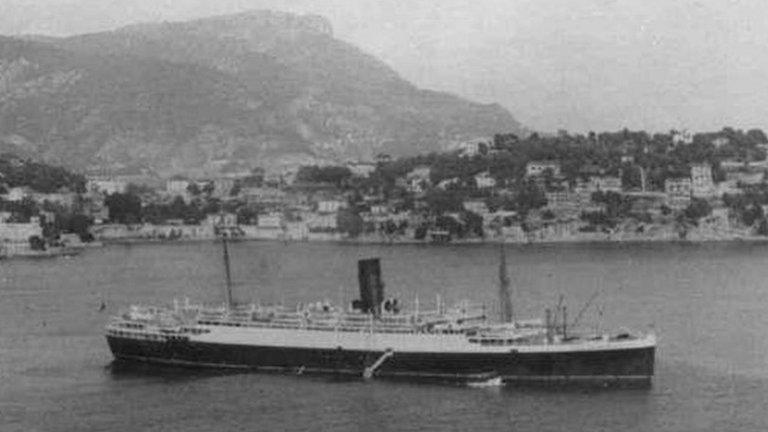Lancastria: Calls for WW2 sinking to be commemorated
- Published

The sinking of the Lancastria was captured in several photographs
The UK government is being urged to do more to commemorate the sinking of the Lancastria in one of the worst maritime disasters of World War Two.
A total of about 4,000 British troops and French and Belgian civilians died when the ship was bombed in June 1940.
Campaigners including former army head, Gen Lord Dannatt, as well as relatives of those who died, want the wreck to be formally designated a war grave.
The Ministry of Defence said it already had protection under French law.
In a letter to the Times, external, signatories also including actress Joanna Lumley and author Louis de Bernieres say the government should do more to remember those who died "in one of the forgotten disasters of the war".
'Sadness remains'
They say the suffering of the victims' families is also made worse because they believe some documentary evidence about the disaster is still being withheld.
But the MoD said that all the contemporary documents relating to the sinking were in the public domain.

One memorial is in the grounds of the Golden Jubilee Hospital in Glasgow, near where the ship was built
The letter says: "The sinking may have happened 75 years ago, but to those who still grieve it is not a dim and distant memory.
"The sadness of children orphaned that day who are still alive, remains, and is exacerbated by the fact that Lancastria has never been given the status of official war grave by the British government.
"Furthermore, these relatives do not have a clear understanding of what happened as documentary evidence, they are told, remains unavailable; and possibly will not be revealed until 2040, which is of no comfort; indeed it adds to their distress as the relatives, themselves, will not be alive."

The ship sank within minutes but news of the disaster was suppressed by the British government
The Lancastria, a Cunard liner in peacetime, was bombed near the port of St Nazaire the day before France surrendered to the Nazis.
It was estimated to be crammed with between 6,000 and 9,000 British troops and French and Belgian civilians and it is believed that more people died than in any other engagement involving British forces in World War Two.
Many were trapped inside the vessel and others struggled to survive in the water that had become thick with oil.
News of the sinking was suppressed on Prime Minister Winston Churchill's direct orders for fear of the effect it might have on morale.
Nearly six weeks later the New York Times broke the story, printing dramatic pictures of the disaster.
There are monuments to the Lancastria in both France and Britain - in St Nazaire, near where she sank, in Glasgow where she was built, one at the National Memorial Arboretum in Staffordshire, as well as a stained-glass window at St Katharine Cree Church in London.
In 2008 the Scottish government commissioned a medal for survivors and descendants of those who were killed.
- Published5 April 2015
